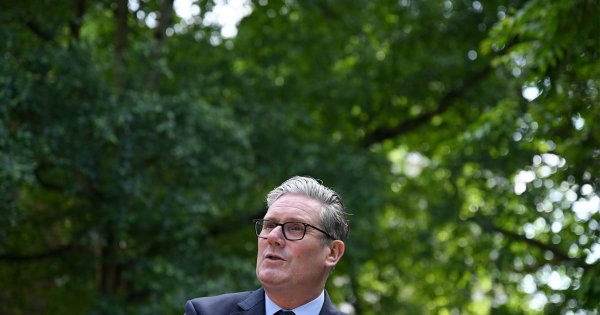British Future’s Sunder Katwala will be offering comment on the general election through the night in ITV’s ‘Opinion Room’. Here he sets out what he’ll be looking out for on Thursday night (and Friday morning).
1. Will turnout rise?
Will a close election see turnout rise? It was 65% last time, above the dismal 58% post-war low in 2001 and the 61% turnout of 2010. Watch the total number of votes too – 29,687,604 in 2010 – to see how far concerns about the new registration rules were allayed by the late rush to register online.
2. Who will govern? (How many seats might be enough?)
The winning post has been shrinking, with a 326 seat Commons majority looking a distant dream for any party.
If either major party could reach 300 seats, a two-party coalition with the Lib Dems could well have a slender majority. (Both have ruled out any formal coalition with the SNP, which will probably be the third largest party).
To have a viable route to remaining Prime Minister, David Cameron will need the Conservative and Liberal Democrat seats to add up to 314 -whether that is 286 Conservatives and 29 Lib Dems, or 290 blues and 24 yellows. He could then survive a confidence vote, as long as Cameron and Clegg can make a deal which both of their parties support, secure the confidence of Northern Ireland’s DUP MPs and trust that Sinn Fein retain their century-long policy of abstention.
It would be trickier, politically, if UKIP and LibDem votes are needed at the same time, but that could reduce the 314 total by the number of UKIP MPs.
If the Conservatives and Liberal Democrats have a joint total under 310 seats, it is hard to see any way for David Cameron to prevent Ed Miliband forming a Labour minority administration, since more than 326 Labour, SNP, Plaid Cymru, SDLP and Green MPs would vote to end Cameron’s administration.
So Ed Miliband will be Prime Minister if he wins as many House of Commons seats as the Conservatives – but he could also do so even if 15 to 20 seats behind. There would be much debate about the “legitimacy” of a minority government if it had won fewer seats and fewer votes too.
3. When might we know who is winning?
The 10pm exit poll is a crucial moment. It was uncannily accurate in 2010 and 2005, but well off the mark in 1992. If this complex election is very close, the forecasters might hedge their bets.
Nuneaton is the first key marginal seat due to declare, at around 1am. Mathematically, it lies 38th on the Labour attack and Tory defence lists, so it is a good indicator in an election where David Cameron can probably afford to lose 30 but not 40 seats.
Between 2am and 3am, Scottish declarations will dominate. By around 3am, a fairly wide cross-section of marginal seats across different regions will give a reasonable sense of whether the initial projection is holding up.
4. Which are the key seats to watch?
British Future will be testing our ‘Kingmaker’ seats theory, having identified the dozen tightest ‘too close to call’ Conservative-Labour races where Labour were local constituency favourites, in the polls and the betting, with three weeks to go.
David Cameron could just about have the largest party in a photo finish without any of these seats, but he can’t stay PM without holding some of them. If Cameron wins eight of these dozen seats, we predict he would remain Prime Minister. Should Ed Miliband gain six of them, he would probably get to lead Britain’s next government.
Here are the anticipated declaration times for our ‘Kingmaker’ constitutencies.
Nuneaton (1am)
Northampton North (2am) and City of Chester (2.30am)
Croydon Central (3am) and Stockton South (3am)
Cannock Chase (4am), Harrow East (4am) and Ipswich (4am)
Wirral West (5am), Keighley (5am), Brighton Kemptown (5am) and Ealing Central and Acton (5am)
5. Who might be the biggest casualty of election night?
Deputy prime minister Nick Clegg, UKIP leader Nigel Farage and Scottish Labour leader Jim Murphy all face a tough fight to win their constituency contests. If they all survive, other big names at risk include ex-party-leaders Liberal Democrat Charles Kennedy and Green Caroline Lucas in Brighton Pavillion. Alex Salmond will be confident of seeing off the LibDem appeal for tactical votes in Gordon.
Neither David Cameron in Witney nor Ed Miliband in Doncaster North are in trouble from their constituents, but either might struggle to retain their party leadership if they are not in Downing Street within weeks of the vote.
6. How big an earthquake in Scotland?
The SNP currently holds six of Scotland’s 59 seats, with Labour on 41 seats, the Liberal Democrats on 11 and the Conservatives on 1. Opinion polls show that Nicola Sturgeon’s party are set to have a record-breaking night, closer to an avalanche than a landslide. It may be difficult to find a record that they do not break.
Twelve seats would be the largest ever SNP contingent of Westminster MPs: they held 11 seats before the 1979 election. If the SNP does win most Scottish seats, that would be the first time since 1959 that Labour did not elect most MPs in Scotland. Labour has led the popular vote in Scotland in every General Election for half a century since 1964.
The most interesting question may be whether the SNP can advance beyond 45% of the Scottish vote. The SNP polled 45% in the 2011 Scottish elections, and 45% was also the losing score in the 2014 independence referendum. If the SNP were to outstrip the largest vote share in a Scottish election – the 50.1% won by the Conservative and Unionist party in 1955 – it would signal an ability to appeal beyond those who voted Yes in 2014.
7. How many Liberal Democrats can survive?
Election 2015 is a defensive battle for the Liberal Democrats, who are defending 57 seats, but polling much lower than the 23% of the vote they won in 2010. The Lib Dems hope to hold 30 seats. Fewer than 28, or a national vote share below 11.5%, would mean that they had lost half of their votes and/or seats. Would losses on that scale raise a ‘legitimacy’ issue for a party seeking to retain a role in government too?
8. What is success for UKIP?
It could be a long night of ever-shorter fingernails for Nigel Farage and his party. It will be after 5am when the key declarations in South Thanet, where the leader is standing, and Rochester and Strood, defended by ex-Tory MP Mark Reckless, are declared.
Farage’s promise to quit “within ten minutes” if he loses may encourage both UKIP supporters and opponents to stay up late.
The party has one safe seat, thanks to the personal popularity of Douglas Carswell in Clacton. But Mark Reckless’ ability to defend Rochester and Strood is just as important. UKIP would struggle to threaten to win more defections from the Conservatives (or Labour) if one of their two switchers saw his Parliamentary career ended within a year.
UKIP are hopeful of good news in Castle Point (2am) and Thurrock (3am), before waiting for the crucial Kent constituencies to declare later on, but would be disappointed to see its “purple revolution” see an increase from two seats to just three. Four to six seats would be a pretty respectable total, given the difficulties for new parties presented by the British electoral system.
UKIP would certainly be disappointed if they did not finish third in the popular vote, having led the Liberal Democrats across most of this Parliament. UKIP won 27.5% in the European Elections in 2014. There will be almost twice as many voters taking part in the General Election, but for UKIP to match the 4.3 million votes it won a year ago the party will need to be closer to 15% than 10% of the national vote.
9. How important will the ethnic minority vote be?
The Conservatives won just 16% of the non-white vote in 2010, compared to 36% overall. British Future calculated that the ‘ethnic vote gap’ cost the Conservatives at least 24 marginal gains from Labour last time around, as they fell short of a majority. We will be watching those seats again, to see if there are signs of a recovery. The most diverse seats that the Conservatives already hold may be crucial to who holds Downing Street: the Conservatives represent eight seats which are more than 33% ethnic minority and, having trailed in most of them in constituency polling, face several tough battles to retain them.
Most diverse Conservative seats
Harrow East (60.8% non-white); Ilford North (47.5%); Hendon – (45.1%); Brentford and Isleworth (42.2%); Croydon Central – (38.6%); Ealing Central and Acton (36.7%); Wolverhampton South West (35.5%); Finchley and Golders Green (33.6%).
10. Will the new Parliament better reflect Britain’s ethnic diversity?
British Future is projecting an increase to more than 40 ethnic minority MPs, from 26 in 2010, though the precise number will depend on the results in marginal seats.
The Conservatives should increase their number from 11 ethnic minority MPs, with 18 candidates defending Conservative-held seats, though Paul Uppal is the underdog to retain his Wolverhampton South-West constituency.
Labour, currently on 16 ethnic minority MPs, also has 18 candidates defending Labour-held seats, though Anas Sarwar in Glasgow Central seems unlikely to hold off the SNP tide. But Labour’s total should rise to over 20, since they seem very likely to gain Brent Central, Bradford East and Norwich South from the Liberal Democrats, while Labour’s Thangam Debonnaire has recently become the favourite to gain Bristol West too. The party would extend their lead in the race for representation should Labour candidates can gain key marginal seats, such as Morecambe and Lunesdale, Ealing Central and Acton, and Harrow East, in close contests against Conservative opponents.






